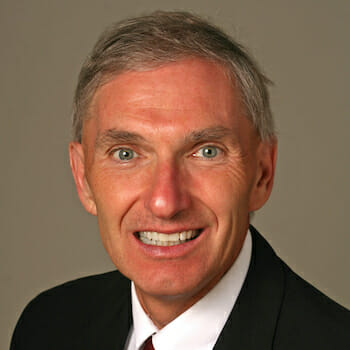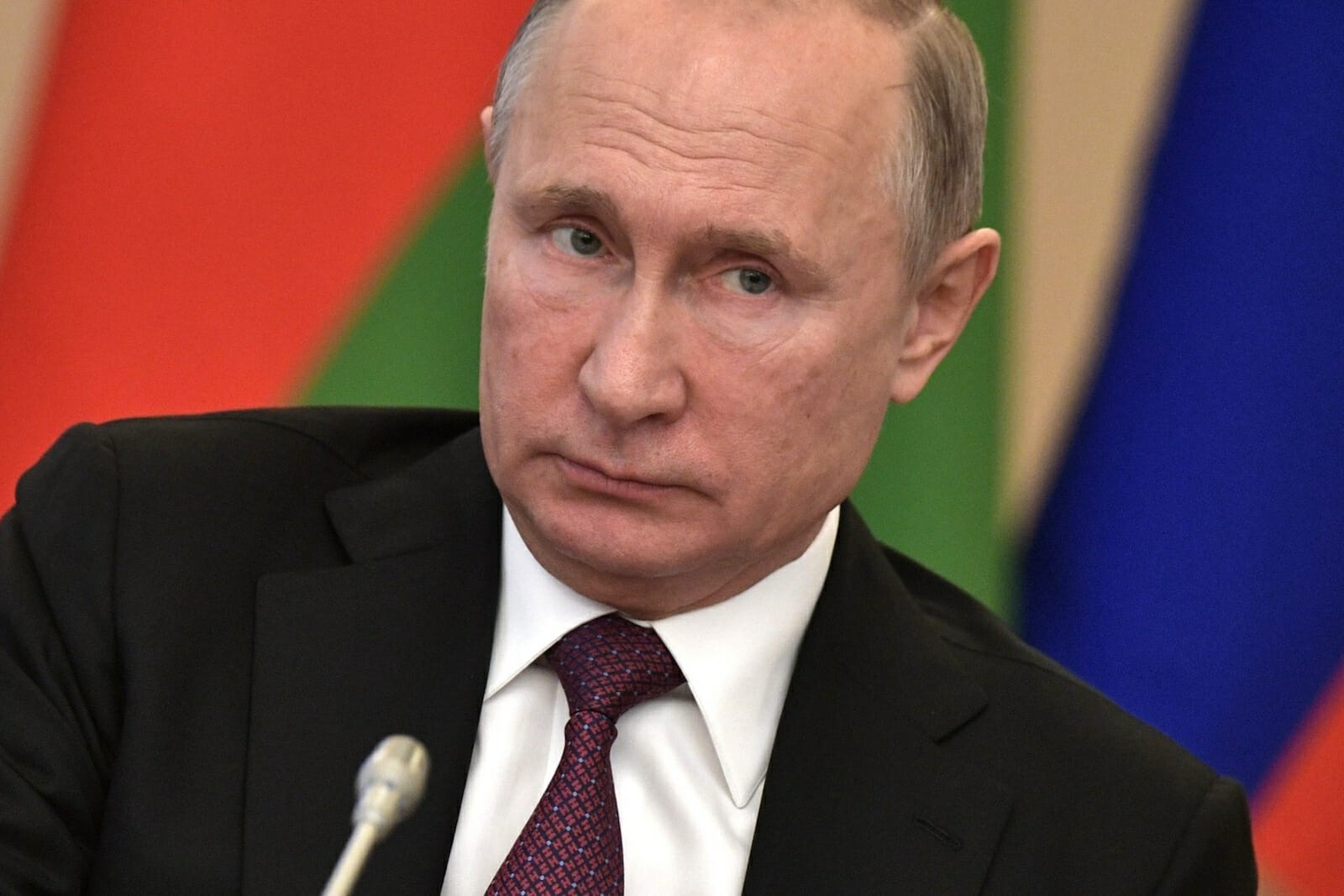
Making Russia Great Again: The Future of the Russian Presidency
On March 24, 2018, the results of Russia’s presidential elections were officially published. Vladimir Putin, the incumbent, overwhelmingly won victory during the first round of voting. The total turnout was 67% of eligible voters. Despite criticism about the fairness of the election, it turned out to be a referendum on Putin’s nationwide support.
Putin’s reputation around the world extends from praise as expressed by Russia’s State Duma Speaker Vyacheslav Volodin, “the future of Russia is with the name of Putin only” to a total denunciation of him, when the late Sen. John McCain declared that Putin is worse than al-Qaeda. Despite these polarized approaches, Putin’s victory was clear. However, his victory poses two questions: how and why did he win and what happens in 2024 after Putin completes his second term as president?
Déjà Vu
Unlike states with a century-long tradition of checks and balances, Russia’s political system has not fundamentally changed from the time of the Tzars and through the Soviet Era. Giving unlimited power to the man at the top. This tradition of exalting authoritarian modernizers goes back to Peter the Great, with a brief intermission under the Boris Yeltsin presidency.
The context for Putin’s presidency was made possible by Yeltsin, who became the first popularly elected leader in Russia’s history. Yeltsin’s two-year flirt with democracy ended when he ordered the military to fire on Russia’s Parliament.
Winning the 1996 presidential elections in part was due to the direct oligarchs’ support. Yeltsin became dependent on his sponsors. Together with his health issues, unsuccessful Chechen wars, and Russia’s lack of international relations, his inability to create a law-based state and to protect Russia’s nascent democracy became evident. Yeltsin understood this and, in contrast to Russian political tradition, voluntarily resigned on December 31, 1999, appointing Vladimir Putin as acting president.
A new constitution was adopted, returning Russia to authoritarianism. The president was granted extensive power over foreign and domestic policies, total control of the government together with the legislature under the control of the president. The president was bound to accept some formal checks and balances such as impeachment and the Federation Council approval of martial law.
Putin’s Russia: Old Approaches, Restored Traditions
Putin became popular because he restored the traditional power system in Russia at a time of economic crisis following the collapse of the country’s economy and social welfare system. Putin persuaded Russians that they would have a better life, stability, order, and would make Russia great again by appealing to traditional Russian symbols of power.
Russia during the Mongol-Tatar era adopted the autocratic type of power with an unlimited ruler at the top. The autocracy had been strengthened after the collapse of the Byzantine Empire and Russia took over the concept of a ruler’s benevolence. Later it was transformed into Slavophiles’ ideology about the authenticity of Russian historical development, which had been borrowed and modernized by Lenin and Stalin in the 20th century. Representative bodies such as the duma never limited the ruler who had possessed absolute power from 1721 until 1917.
In turn, the Bolsheviks, later Communists, who seized power in 1917, positioned themselves as social-democrats. In reality, they were a sectarian type party with the unlimited power of the leader. In formal terms the Soviet Union was democratic, but everything was under the control of the Communist Party and the party leader possessed unlimited power.
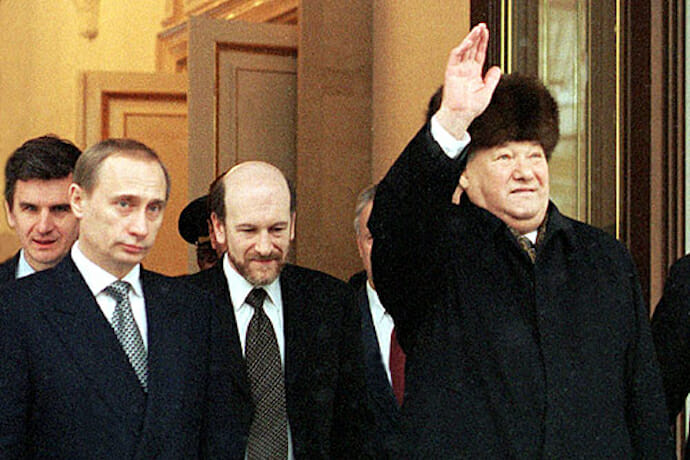
Putin started his presidency with the revitalization of the idea about a strong state. The prerogatives of the Russian legislature were reduced together with regional power and the Federation Council was transformed into an institution fully dependent upon Putin. Putin crafted his “party of power” – United Russia, which with the state’s support since 2003 and up to the present has had a majority in the duma. It became a voting machine for Putin and plays the same role the Communist Party did during the USSR. Thus any elections in Russia since 2000 were just like the Soviet elections, when the electorate is under the control of the state, although without overt repression. The most popular media sources, especially TV channels, were transformed into state-owned companies. Putin’s support is based on a literal “social contract” that has and continues to perform well and by providing stable salaries, bigger pensions, and improved economic quality of life. Therefore the population mainly believes that the state and its leader are taking care of them.
Putin’s presidency invoked positive images of the USSR, returning to the former greatness of Russia, which led to a renewed respect for strong state power. Everything was put into the order – even oligarchs were subordinated to the president, and only those who express absolute loyalty to him maintained their status. The majority of Russians are inspired by Putin’s foreign policy. In 2014 he annexed Crimea and was termed as a “Gatherer of Russian Land” like Peter the Great. Military actions in Ukraine and Syria and the increasing hostility with the West also increased his popularity.
Although Putin strengthened his power through limited repressions and military conflict, it is impossible for him to impose purges like Stalin or to conquer the whole of Ukraine. Such blatant use of force is neither needed nor fits with his image as a modern leader. Invoking political stability he has suppressed selective opposition leaders, mass media, and minority movements. Russians simply welcomed this or at least had no interest. Being a skillful politician, Putin does not want to take a place of the last Emperor Nickolas II, who involved the country in wars with a large number of casualties which mainly detonated Russia in 1917.
In addition to Putin’s vision of Russia’s 1917 Revolution, he blames Lenin for the USSR’s eventual demise and for civil war. Putin defends Stalin for making a pact with Hitler and criticizes neighboring states for removing monuments glorifying the Soviet army or Lenin. Russia is hardly on the verge of a revolution, and Russia’s elites are more consolidated around Putin than they were around Nicholas II.
Prior to the presidential campaign, Putin’s administration initiated military-mobilization similar to Soviet tradition, partially revitalizing the atmosphere of suspiciousness and threats from abroad. Putin personally demanded that all enterprises be ready to increase production immediately in case of an urgent need, which simply helped him to crush liberals. Thus it is clear why the popularity of Vladimir Putin according to polls by the All-Russian Public Opinion Research Center, reveals a fantastic level of support hovering around 80% during the lead up to the elections.
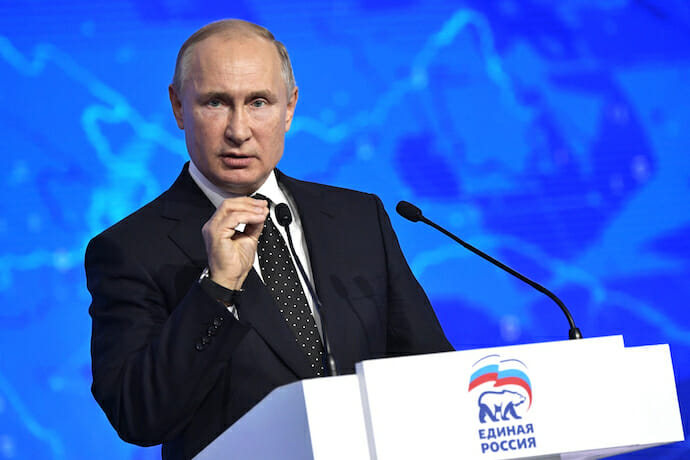
Putin became not simply a leader but a brand. Supporting the definition of Putin’s regime as a form of distilled or hybrid authoritarianism. Therefore it can be defined as a commercialized Soviet regime that has replaced Marxism-Leninism with an eclectic ideology centered on the idea of resurgent great-power status, combining neo-imperialism with state capitalism. In addition to this, there is the “cult of personality” – the inherent component of the Soviet political system – which in part was revitalized in Putin’s Russia.
Indeed, Putin is everywhere. He gifts apartments, visits churches and plants, military units and sporting events and, more importantly, communicates with “small” Russians. While everybody knows that all of this activity is fully orchestrated – for a worker from Ural and a farmer from Siberia this is enough to believe that their leader is with them. Such a style allowed Zbignev Brzezinski to compare Vladimir Putin with Benito Mussolini.
Putin also has shuffled and changed his inner circle now and again, just following the century-long native experience from tsars to Yeltsin. In 2017 two waves of governor’s purges were undertaken. They are now being replaced by so-called “effective managers,” no less loyal to Putin, but lacking obvious political weight or any political ambitions. Such a system proves that the ruler is effective, has no personal links, and judges his lieutenants in accordance with results. Therefore, the classic Russian tradition about the good tsar and bad boyars was also restored by Putin.
2018 Campaign: Surprises without Surprises
After the dramatic pause Putin kept up since the beginning of 2017 regarding whether he would run for president again, he announced his candidacy in December 2017 during his visit to GAZ automobile plant. It again followed the traditions of the USSR when its leaders usually made political statements before the workers. Another goal of such a pause was a Kremlin’s desire to guarantee the substantial turnout in favor of Putin. Thus Russians were frightened by the mock candidacy of Ksenya Sobchak – the journalist called the “Russian Paris Hilton.”
During his annual press conference on December 14, 2017, Putin announced that he would run for president as a self-nominated independent candidate, while United Russia officially endorsed him. He posed as a candidate for all Russians, taking advantage of his high approval rating.
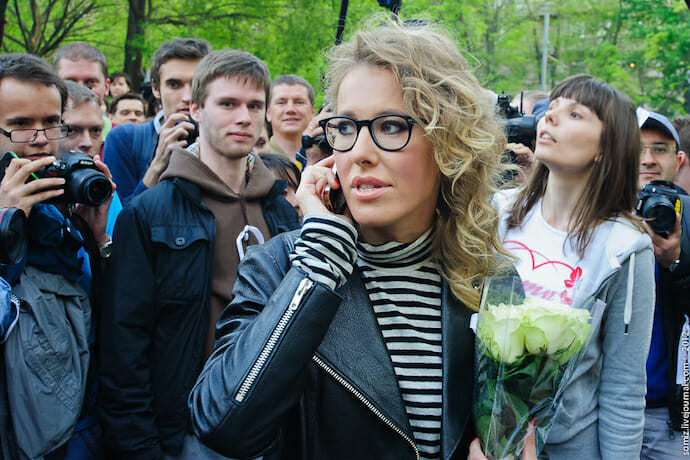
Putin argued that Russia is in the crosshairs now and only what can secure the country’s great power status is further modernization in all spheres – as Stalin said in the fall of 1920. Putin had promised to cut the poverty rate, to make a dramatic shift in the improvement of the quality of life, healthcare, and the social safety net.
Putin’s Challenging Fourth Term
Nevertheless, Putin’s triumph did not address the country’s biggest challenge – the weakness of its economy. Russia still is highly dependent on raw-materials exports such as oil and natural gas. Additionally, as per World’s Bank statistics, in 2017, Russia’s GDP was $1.578 trillion. In comparison, Germany’s is $3.677 trillion and America’s is $19.39 trillion. The Russian economy is merely a fraction of the U.S. and German economies, with longer term projections it will continue to lag. The Russian economy faces numerous challenges and it is not clear if Putin can address them.
Therefore, not accidentally, Putin’s anti-Western rhetoric started to decrease after his victory. Moreover, the main point of his inauguration speech on May 7, 2018, was on the country’s further economic and social development.
Putin again would like to serve both masters: his Imperial-Soviet heritage and its 21st century’s mix—a modern authoritarian who made Russia great again. As it was emphasized by Richard Pipes, the real development of Russia will start only after the country eliminates finally the century-long model of the state, when the ruler will be simply the ruler but not the owner of the country.
The main challenge for Putin will be in 2024. As per the Russian constitution, his fourth term will be his the last. Thus he will have some options. The first is to promote a successor. But due to the lack of succession line plus the absence of top power rotation procedure as in China, such a scenario will be risky. One example is Uzbekistan, where the passing of decades-long leader Islam Karimov resulted in the catastrophe for his family and inner circle. Therefore Putin will try to legalize the security for himself and his status. Additionally, due to the de-facto Putin’s cult of personality, it will be difficult if not impossible for someone to replace Putin without his direct endorsement.
The second option is to rewrite the constitution. One option is a political shift from presidential to a parliamentary system in Russia. Dmitry Medvedev’s presidency reflected this solution. In this case, the next “Medvedev” will be a president in 2024 while Putin will be able to possess the position of prime minister with the real power and decision-making.
The third opinion is the implementation of Deng Xiaoping’s experience in China into Russia’s politics. That is, Putin formally will not occupy any of the top state’s positions while keeping all of the power leverages in his hands.
Some speculate that Russia might have its own “color revolution” similar to ones found in Ukraine. Triggering events such as a highly disputed 2024 election or a split between Moscow, St. Petersburg, and the result of the nation might splinter the nation. Further economic deterioration might also do that.
Vladislav Inosemtsev correctly argues there will be no “Reconciliation Pact” in Russia in the light of 2024 because the formation of real opposition will be problematical and accordingly “there will be no one to negotiate and there is no one with whom.” In turn, he supported the idea of some policy shift from center to Russian regions, which will change the center’s status from the “boss” to the “arbitrator” and, accordingly, will secure the status of Putin’s elite. However, the role of Vladimir Putin in the given process is unclear. Viewing the same experience of the Gorbachev’s reformation of the USSR, now it’s hard to believe that Putin will agree to impose more liberal policies between Moscow and the regions.
None of these options are ideal. Putin will have to study them and to bear the responsibility for the final decision. Otherwise at best he will become Yeltsin number two, whom he personally isolated from any approach to the policy as Stalin did with an ill Lenin. Putin has some years to avoid this and to elaborate a historic choice for Russia and for himself as well. Undoubtedly the post-Putin era will start in Russia sometime, but now it seems to be most probable that Vladimir Putin will play a significant if not a key role in post-Putin Russia.
